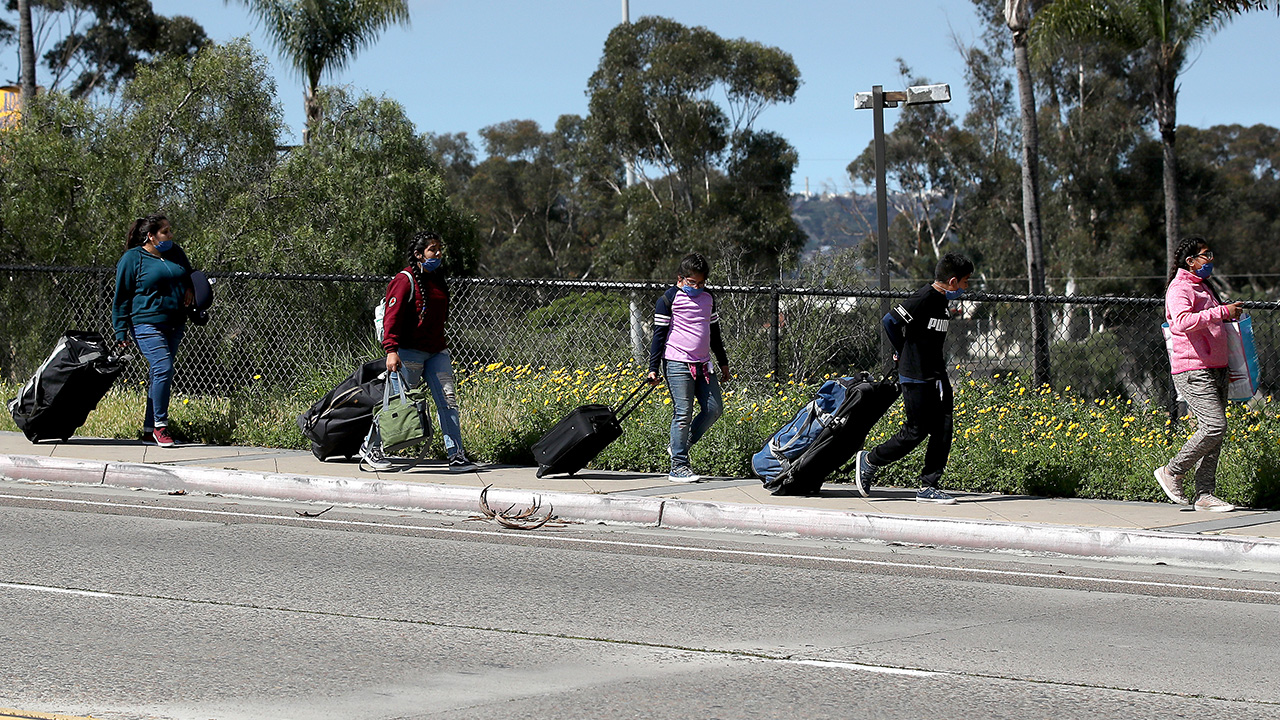If made permanent, the president’s restrictive executive order will choke off the supply of workers necessary to bounce back from the coronavirus.
President Trump’s new immigration restrictions are supposed to be temporary—only 60 days, according to the executive order he signed last month. But there are reasons to be skeptical, and they go beyond the fact that the coronavirus pandemic has given Mr. Trump a pretext for doing something he’s wanted to do since he descended that escalator in 2015 to announce his White House bid.
Historically, major health scares and severe economic downturns have resulted in significant changes to U.S. immigration law. With Covid-19 deaths still climbing by well over 1,000 a day and 30 million people already out of work, the nation’s border policies will be seen in an entirely new light. A Washington Post/University of Maryland survey taken after the president’s announcement found that 65% of respondents—including 83% of Republicans, 67% of independents and 49% of Democrats—support the suspension. So do at least 60% of whites, nonwhites, men and women.
Michael Hanmer of the University of Maryland, who co-directed the survey, told the Post: “One of the most surprising results is that majorities of 18- to 29-year-olds, who tend to be more open to immigration and have a more global perspective, support the proposal to block immigration.” Which is to say that large numbers of voters who disapprove of the president’s overall job performance—currently in the mid-40s—and won’t pull the lever for him in November nevertheless support him on immigration.
Immigrants have long been associated with disease and unemployment in the public’s consciousness, and the coronavirus is making people more anxious. It’s happened before. Outbreaks of cholera and typhus in 1892 led Congress to pass the National Quarantine Act, which gave the president the power to suspend immigration in case of an epidemic and gave immigration officials more discretion in excluding new arrivals. By 1893, the number of immigrants arriving in New York City had been cut in half and the country faced a depression. In the 1890s, a million fewer immigrants came to the U.S. than in the previous decade.
The Great Depression likewise brought calls from the public to reduce immigration, and lawmakers obliged. In 1930 President Hoover issued an executive order to U.S. consulates that mandated much stricter vetting of prospective immigrants to make sure they were self-sufficient and unlikely to become “a public charge.” In the first year after the new regulations took effect, immigration from Europe fell by 60%. Between 1930 and 1940, the Mexican-born population of Arizona, California, New Mexico and Texas dropped to 377,000 from 617,000, due in large part to an organized effort by U.S. officials to remove them.
Hoover, a Republican, was voted out of office after one term, but not even a politician as popular and transformative as his Democratic successor could do much about the public’s anti-immigrant mood at the time. “The administrations of Franklin Delano Roosevelt, which changed almost every other aspect of American political, economic and social life, made no attempt to alter the basic structure of immigration legislation or administration,” wrote the historian Roger Daniels in his book “Coming to America.” “There was no New Deal for immigration.” If the economic downturn persists, even a President Joe Biden might not quickly or easily reverse whatever Mr. Trump has in store on immigration between now and the end of his term.
What we do know is that the president’s closest adviser on immigration, Stephen Miller, has lobbied to make permanent much of what is included in the suspension. He would reduce family-based visas, nix the diversity visa program, and even limit high-skill immigration. Mr. Trump himself has repeatedly endorsed Senate legislation that would cut legal entries in half, and that was before the pandemic.
This is a White House that sees immigration as a zero-sum proposition. It believes that a foreigner who comes here to work harms the job prospects of those already here. It’s an intuitive argument, but economists refer to it as the zero-sum fallacy for a reason. In a blog post last year, David Henderson of the Hoover Institution used a nonimmigration example to illustrate the point. Between 1950 and 2000, an unprecedented number of women entered the U.S. labor force, yet the jobless rate for both men and women over that 50-year span fell—suggesting that new entrants to the workforce don’t necessarily crowd out existing workers.
And so it is with immigrant workers, who don’t just increase the supply of labor but also the demand for good and services, which in turn requires businesses to hire more people to meet the higher demand. Mr. Trump is hoping for a fast recovery—we all are—and like his predecessors he’s hoping to fuel it with a smaller workforce. We’ll find out in November if that’s good politics, but we already know that it’s bad economics.
This piece originally appeared at the The Wall Street Journal (paywall)
______________________
Jason L. Riley is a senior fellow at the Manhattan Institute, a columnist at The Wall Street Journal, and a Fox News commentator. Follow him on Twitter here.
This piece originally appeared in The Wall Street Journal
